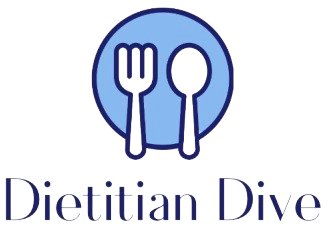:By Registered Dietitians
Reading a nutrition label can feel like decoding a secret language. Understanding how to read a nutrition label allows you to make informed choices about what you are eating and can be an important tool to help align your food choices with your dietary goals. This guide will break down the key elements of a nutrition label and by the end you’ll be equipped to make informed selections when purchasing your foods.
1. Serving Size: Your Starting Point
At the top of every nutrition label, you’ll find the serving size, which tells you the amount of food the nutrition facts below are based on. It’s the reference amount for all the nutritional information provided on the label. Serving sizes are meant to help you compare foods and provide the recommended quantity for what you are eating. Remember, if you eat double the serving size, you’ll need to double all the nutritional values on the label!
2. Calories: The Energy Measure
Calories are a measure of the energy you get from the serving of food. Understanding calories is crucial for managing energy intake, as eating more calories than your body needs can lead to weight gain over time, while eating fewer calories can lead to weight loss over time. Knowing the amount of calories in your foods can help you monitor your daily intake which is an important component in maintaining a balanced diet and aligning with your dietary goals.
3. Macronutrients
Macronutrients provide the body with the bulk of its energy and are required in higher amounts by the body than other nutrients. These include carbohydrates, proteins and fats, each playing an essential role in maintaining our bodily health. Here’s a breakdown of each macronutrient as typically seen on a nutrition label:
Carbohydrates: Carbohydrates are the body’s primary energy source and come in different forms that are not all created equal! These include dietary fibers, sugars, and sometimes starch. Dietary fiber is crucial for digestive health and can help you feel full longer, while too much added sugars can have you eating too many empty calories and can lead to common health issues.
Protein: Protein is essential in our bodies for building and repairing tissues, making hormones and enzymes, and serving as a valuable energy source when carbohydrates are scarce. The Recommended Dietary Allowance (RDA) for protein for the average adult is about 0.8 grams per kilogram of body weight per day. High-protein foods include meats, dairy products, legumes, and nuts. Choosing foods with high-quality protein can support muscle health, immune function, and overall well-being.
Fats: Fats are a concentrated source of energy and are necessary for absorbing vitamins, hormone production, and protecting organs. Nutrition labels break down fats into saturated, unsaturated (including monounsaturated and polyunsaturated), and trans fats, showing the grams per serving. While unsaturated fats can be beneficial to heart health when consumed in moderation, saturated and trans fats should be limited as they can raise cholesterol levels and increase the risk of heart disease.
4. Micronutrients: Vitamins and Minerals
Micronutrients unlike the macronutrients above are required in much smaller quantities by your body. However they are just as important to your health and it is important to ensure you are getting enough of these nutrients from your diet. Micronutrients include vitamins and minerals that support a wide range of bodily functions, from supporting immune system health to strengthening bones and converting food into energy. Nutrition labels may not list every vitamin and mineral a food contains but will often highlight those that the food is particularly rich in or those that are added during processing. The amounts of these nutrients are usually given as a percentage of the Daily Value (%DV), which gives you an idea of how much a serving of the food contributes to the total daily recommended intake of that nutrient, based on a 2,000 calorie per day diet
5. The Ingredients List: What’s Really Inside
Found below or beside the nutrition facts the ingredient list tells you everything thats in the food, listed by quantity from most to least. This means that the first ingredient listed is what the food product contains the most of. A short ingredient list with recognizable whole foods is often a sign of a less processed food. Conversely, a long list filled with unfamiliar, chemical-sounding names may indicate the product is highly processed.
Final Tips:
- Start with the Basics: Focus on the most impactful parts of the label for your personal health goals. This might mean calories and fats for someone focusing on weight management, or carbs and sugars for someone monitoring blood sugar levels.
- Balance is Key: Remember, no single food defines your diet. It’s the overall pattern of your eating habits that matters most. Nutrition labels are a tool to help you make better choices within that bigger picture.
- Keep Practicing: The more you read labels, the more intuitive it will become. Soon, you’ll be able to quickly scan and understand the key points that matter most to you.
Understanding nutrition labels is a powerful skill that can help you make healthier choices every day. With this simple guide, you’re well on your way to becoming a more informed and health-conscious consumer. Happy label reading!





